If you fail to plan you plan to fail the old saying goes and as far as calf rearing goes, nothing could be truer.
Over the last two weeks the calf-rearing series has looked at the economics of the system and the importance of completing a budget prior to entering a dairy beef system.
This week is all about getting facilities ready for calf arrival. Having everything in order prior to calf arrival will make management much easier and free up more time for working with stock once they are on farm.
Washing
Power washing calf-rearing sheds should take place as early as possible – and perhaps should have already been carried out at this stage. This is to allow as much time for the shed to thoroughly dry out as possible.
Many of the potential disease-causing bugs found in sheds thrive in wet or damp conditions. By removing as much moisture from the calf’s environment as possible it reduces this risk.
After washing, leave the shed doors open to allow as much air into the shed to speed up the drying process. Washing sheds the day, or days before calf arrival will mean that the concrete will not have sufficient time to completely dry out.
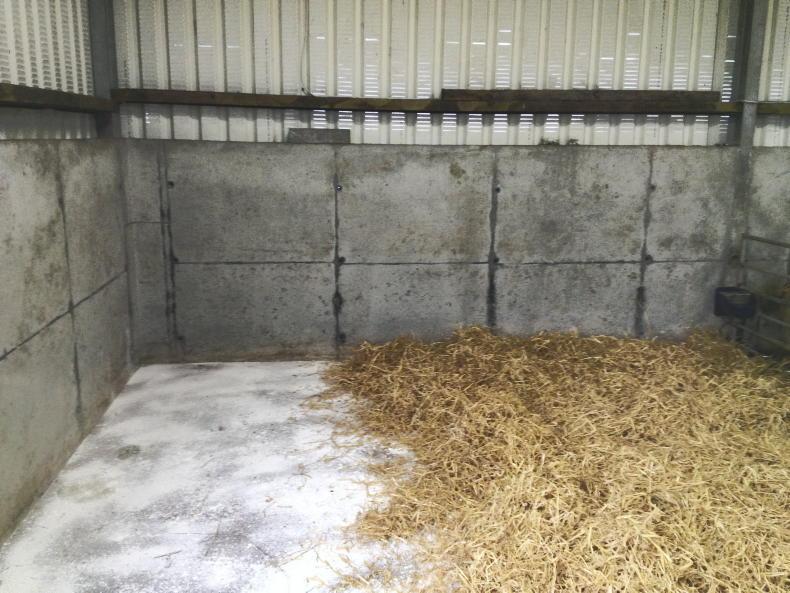
This shed is completely dry prior to bedding for calf arrival.
Spreading a thin layer of hydrated lime on the concrete before it is bedded is another good way of mopping up the last bit of moisture on the ground as well as increasing the pH of the environment which will also help inhibit disease-causing bugs.
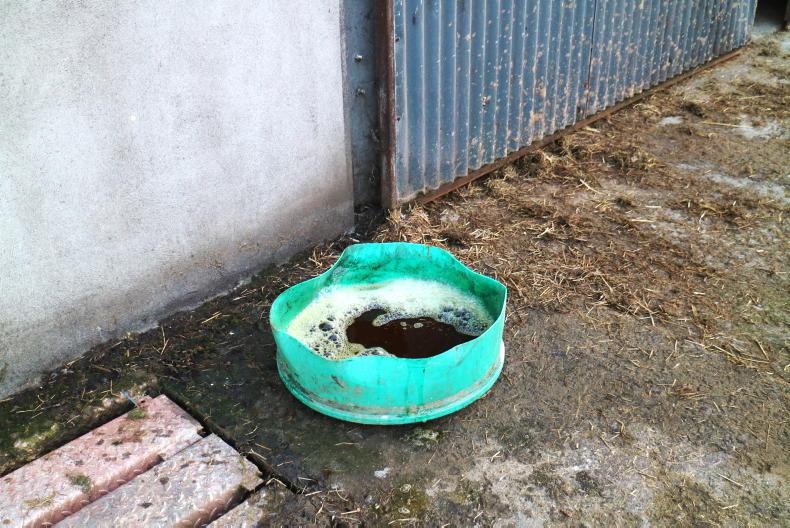
Outside every calf rearing shed there should be a disinfection point. Nobody with dirty boots or overall should be allowed to enter the calf shed.
Once cleaned, there should be no further washing of housing until stock are out at grass. Some farmers will wash houses during the rearing phase in order to keep things as clean as possible. However, this can actually add problems as power washing will make disease causing bugs airborne, spreading them throughout the shed and into the airways of every animal within it.
Minimise the amount of moisture in the calf’s environment as much as possible to minimise disease risks.
Bedding
Ideally straw should already be purchased and be on farm. Where this is not the case, it is worth making the phone call to your supplier now rather than just before you need bedding.
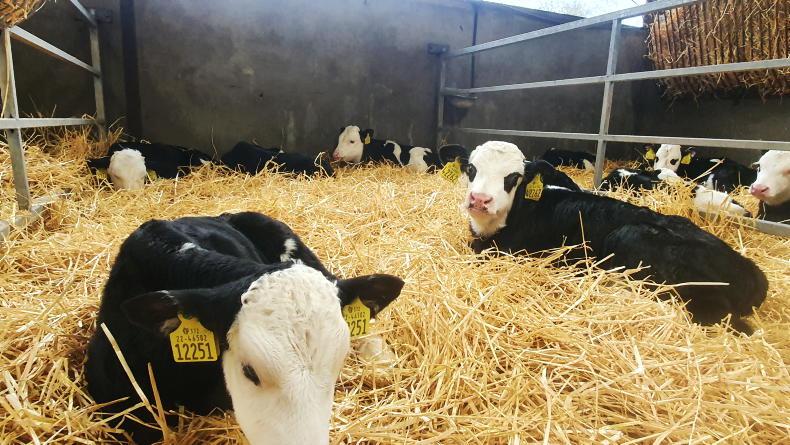
A deep dry bed is a must to ensure calf comfort and to maximise calf thrive.
While it may be expensive, the calf-rearing shed is not a place to skimp on straw. Calves can spend as much as 75% of their time lying down. When lying the surface are of the calf in contact with the ground is much greater and so the risk of heat loss is also increased. Bedding should be up to your elbow when the palm of your hand is on the floor.
Water troughs
Milk to calves is a feed, they also need constant access to fresh, clean water at all times. Putting a water trough in every calf pen now will save a lot of time and labour during the busy rearing period. Ensure water troughs are at the correct height as if they are too high, intake will be reduced.
Calf feeders
Take a look at calf feeders and make sure they are clean and in good condition for the season ahead.
Teats can become weathered and perished over the year and may need replacing. Again, having this done now will save time when the feeder is needed. Always have a few extra teats in stock should one need replacing during the rearing season.
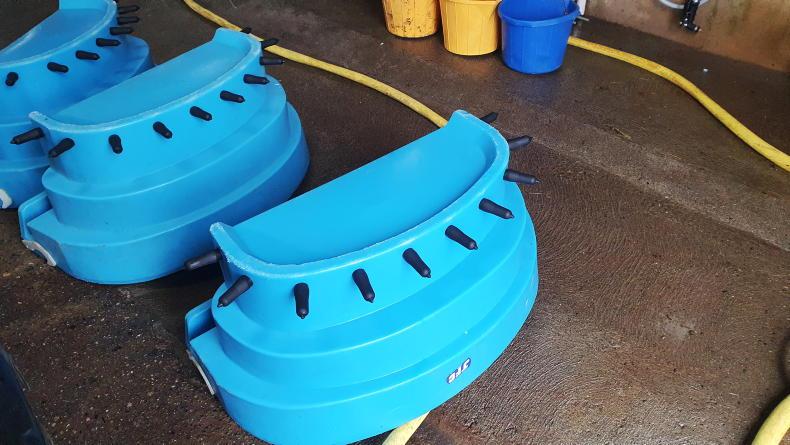
Calf feeders need to be cleaned and checked prior to use this spring even where they were properly cleaned and dry stored all year.
Depending on how well they were cleaned prior to being stored since last spring will determine whether or not new teats will need to be fitted.
Cut out a few teats and split them in two to see what they look like on the inside. Where cleaning has not been up to scratch you will see mould growing internally. If this is the case, replace all teats ahead of calf arrival.
Water heater service
Many farms are using electric or gas water heaters for warming water for calf feeding. Make sure your heater is working and in good order. It is well worth getting heaters services once a year ahead of the period when they will be needed most.
For farmers with gas heaters, make sure you have enough gas in reserve. If you are not already on a commercial rate with your gas supplier it is worth getting in contact with them as there is a decent cost saving to be had versus what you pay for gas cylinders for domestic use.
There is an annual rental fee for the cylinder (recommended to have two so that there is always one in reserve) and then you are charged per cylinder after that.
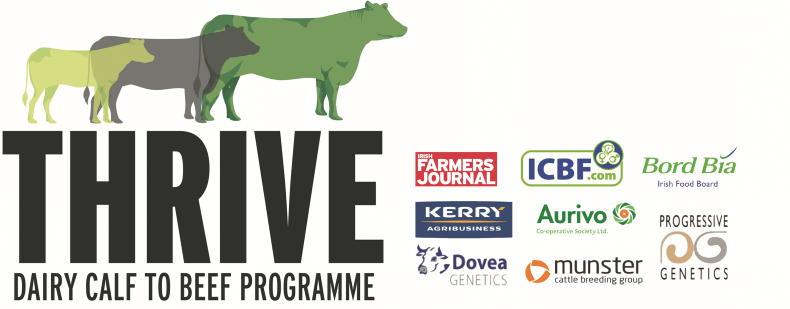
Read more
Thrive: 2021 ended on a positive, but difficult year ahead
Thrive: carrying out a simple budget
Dairy-beef costs rise by €120/head
If you fail to plan you plan to fail the old saying goes and as far as calf rearing goes, nothing could be truer.
Over the last two weeks the calf-rearing series has looked at the economics of the system and the importance of completing a budget prior to entering a dairy beef system.
This week is all about getting facilities ready for calf arrival. Having everything in order prior to calf arrival will make management much easier and free up more time for working with stock once they are on farm.
Washing
Power washing calf-rearing sheds should take place as early as possible – and perhaps should have already been carried out at this stage. This is to allow as much time for the shed to thoroughly dry out as possible.
Many of the potential disease-causing bugs found in sheds thrive in wet or damp conditions. By removing as much moisture from the calf’s environment as possible it reduces this risk.
After washing, leave the shed doors open to allow as much air into the shed to speed up the drying process. Washing sheds the day, or days before calf arrival will mean that the concrete will not have sufficient time to completely dry out.

This shed is completely dry prior to bedding for calf arrival.
Spreading a thin layer of hydrated lime on the concrete before it is bedded is another good way of mopping up the last bit of moisture on the ground as well as increasing the pH of the environment which will also help inhibit disease-causing bugs.

Outside every calf rearing shed there should be a disinfection point. Nobody with dirty boots or overall should be allowed to enter the calf shed.
Once cleaned, there should be no further washing of housing until stock are out at grass. Some farmers will wash houses during the rearing phase in order to keep things as clean as possible. However, this can actually add problems as power washing will make disease causing bugs airborne, spreading them throughout the shed and into the airways of every animal within it.
Minimise the amount of moisture in the calf’s environment as much as possible to minimise disease risks.
Bedding
Ideally straw should already be purchased and be on farm. Where this is not the case, it is worth making the phone call to your supplier now rather than just before you need bedding.

A deep dry bed is a must to ensure calf comfort and to maximise calf thrive.
While it may be expensive, the calf-rearing shed is not a place to skimp on straw. Calves can spend as much as 75% of their time lying down. When lying the surface are of the calf in contact with the ground is much greater and so the risk of heat loss is also increased. Bedding should be up to your elbow when the palm of your hand is on the floor.
Water troughs
Milk to calves is a feed, they also need constant access to fresh, clean water at all times. Putting a water trough in every calf pen now will save a lot of time and labour during the busy rearing period. Ensure water troughs are at the correct height as if they are too high, intake will be reduced.
Calf feeders
Take a look at calf feeders and make sure they are clean and in good condition for the season ahead.
Teats can become weathered and perished over the year and may need replacing. Again, having this done now will save time when the feeder is needed. Always have a few extra teats in stock should one need replacing during the rearing season.

Calf feeders need to be cleaned and checked prior to use this spring even where they were properly cleaned and dry stored all year.
Depending on how well they were cleaned prior to being stored since last spring will determine whether or not new teats will need to be fitted.
Cut out a few teats and split them in two to see what they look like on the inside. Where cleaning has not been up to scratch you will see mould growing internally. If this is the case, replace all teats ahead of calf arrival.
Water heater service
Many farms are using electric or gas water heaters for warming water for calf feeding. Make sure your heater is working and in good order. It is well worth getting heaters services once a year ahead of the period when they will be needed most.
For farmers with gas heaters, make sure you have enough gas in reserve. If you are not already on a commercial rate with your gas supplier it is worth getting in contact with them as there is a decent cost saving to be had versus what you pay for gas cylinders for domestic use.
There is an annual rental fee for the cylinder (recommended to have two so that there is always one in reserve) and then you are charged per cylinder after that.

Read more
Thrive: 2021 ended on a positive, but difficult year ahead
Thrive: carrying out a simple budget
Dairy-beef costs rise by €120/head











 This is a subscriber-only article
This is a subscriber-only article











SHARING OPTIONS: